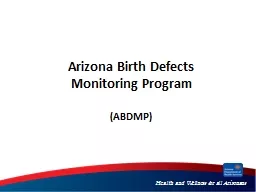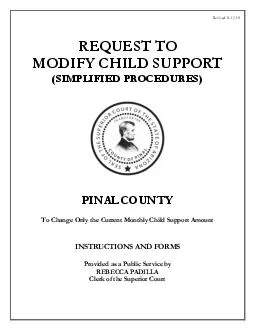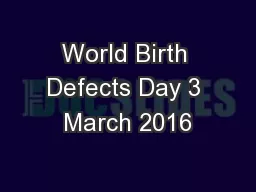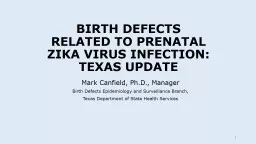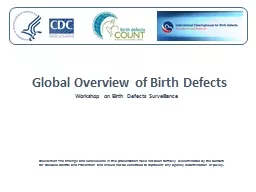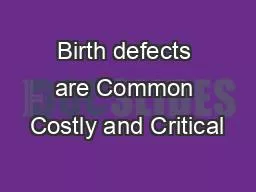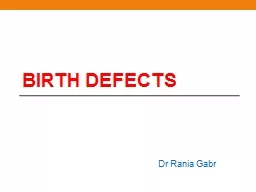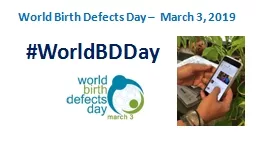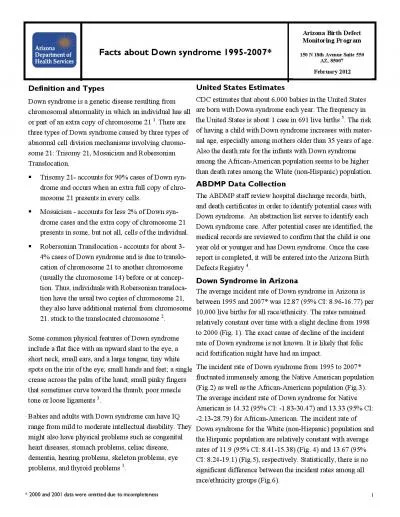PPT-Arizona Birth Defects Monitoring
Author : pamella-moone | Published Date : 2018-10-31
Program ABDMP ABDMP 3 Components Surveillance Prevention Referral to Services Surveillance Surveillance Goals Timely Accurate Complete Data Bureau of Public Health
Presentation Embed Code
Download Presentation
Download Presentation The PPT/PDF document "Arizona Birth Defects Monitoring" is the property of its rightful owner. Permission is granted to download and print the materials on this website for personal, non-commercial use only, and to display it on your personal computer provided you do not modify the materials and that you retain all copyright notices contained in the materials. By downloading content from our website, you accept the terms of this agreement.
Arizona Birth Defects Monitoring: Transcript
Download Rules Of Document
"Arizona Birth Defects Monitoring"The content belongs to its owner. You may download and print it for personal use, without modification, and keep all copyright notices. By downloading, you agree to these terms.
Related Documents

